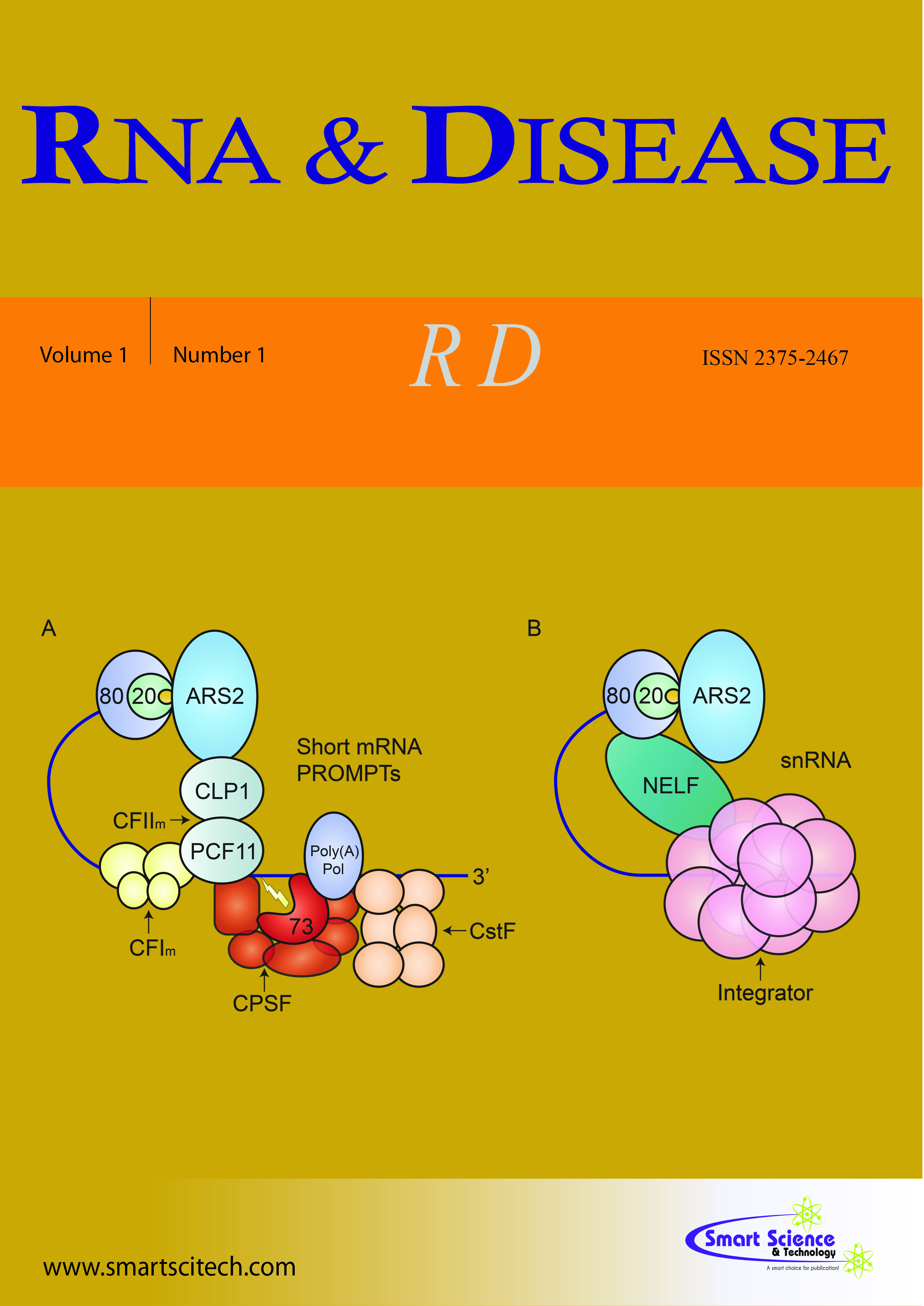microRNA-29 mediates a novel negative feedback loop to regulate SCAP/SREBP-1 and lipid metabolism
DOI: 10.14800/rd.1525
Abstract
The membrane-bound transcription factors, SREBPs (sterol regulatory element-binding proteins), play a central role in regulating lipid metabolism. The transcriptional activation of SREBPs requires the key protein SCAP (SREBP-cleavage activating protein) to translocate their precursors from the endoplasmic reticulum to the Golgi for subsequent proteolytic activation, a process tightly regulated by a cholesterol-mediated negative feedback loop. Our previous work showed that the SCAP/SREBP-1 pathway is significantly upregulated in human glioblastoma (GBM), the most deadly brain cancer, and that glucose-mediated N-glycosylation of SCAP is a prerequisite step for SCAP/SREBP trafficking. More recently, we demonstrated that microRNA-29 (miR-29) mediates a previously unrecognized negative feedback loop in SCAP/SREBP-1 signaling to control lipid metabolism. We found that SREBP-1, functioning as a transcription factor, promotes the expression of the miR-29 family members, miR-29a, -29b and -29c. In turn, the miR-29 isoforms reversely repress the expression of SCAP and SREBP-1. Moreover, treatment with miR-29 mimics effectively suppressed GBM tumor growth by inhibiting SCAP/SREBP-1 and de novo lipid synthesis. These findings, recently published in Cell Reports, strongly suggest that delivery of miR-29 in vivo may be a promising approach to treat cancer and metabolic diseases by suppressing SCAP/SREBP-1-regulated lipid metabolism.












